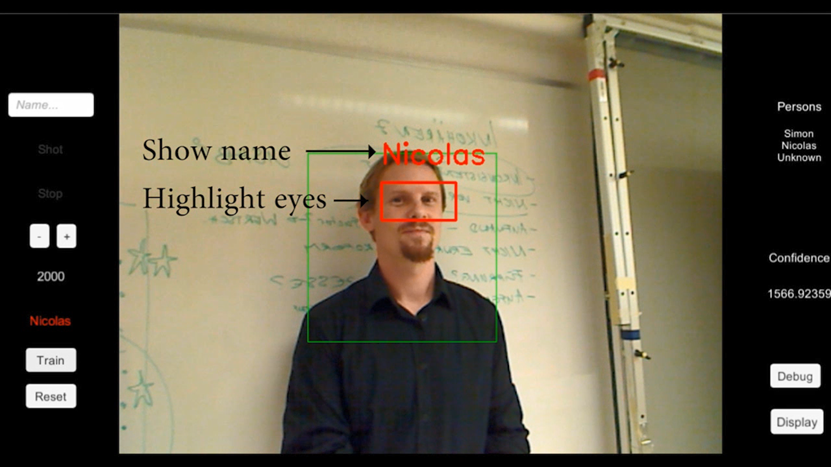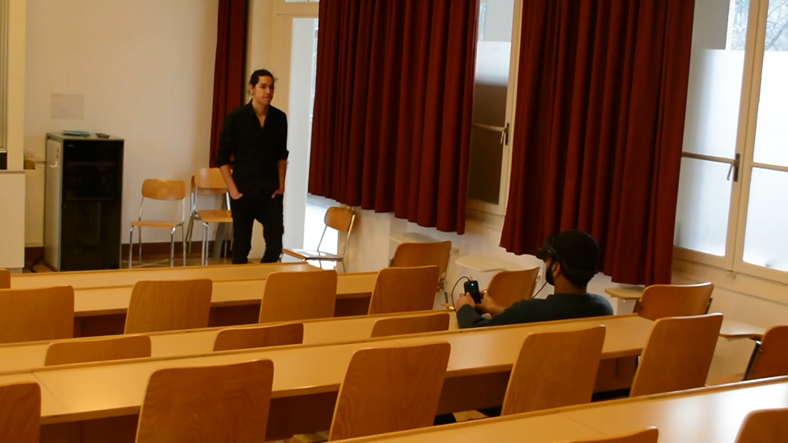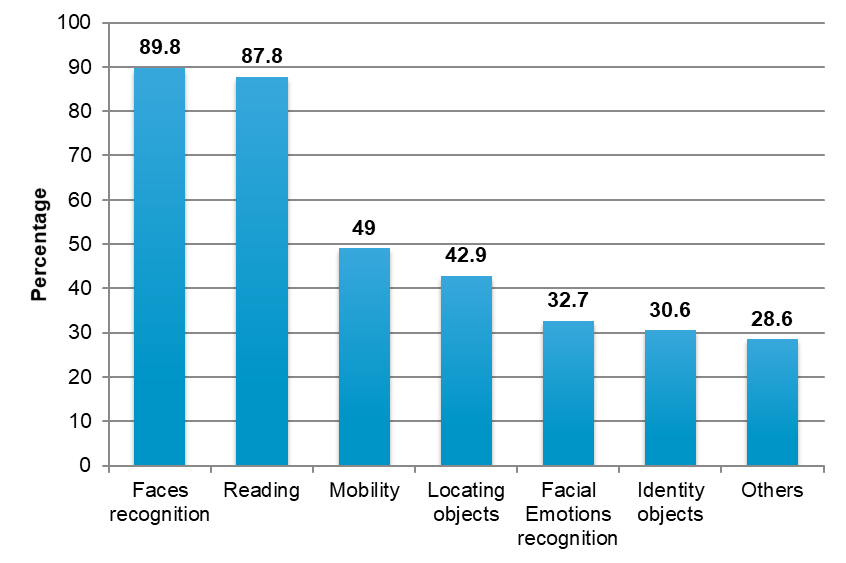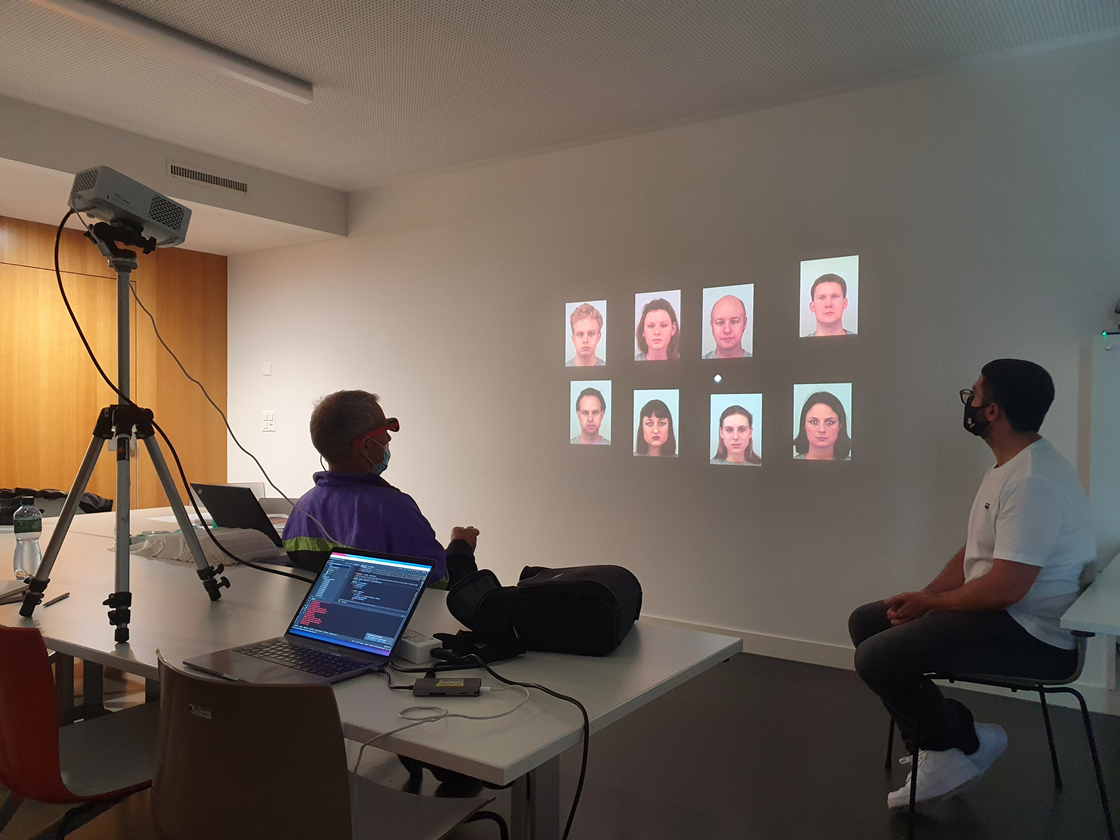In the context of this project, we developed and tested different prototypes and we have also performed more exploratory investigations regarding needs and expectations of the target populations for new technological assistive devices.
In this page, we briefly present the most important works.
Prototype 1 - Proof of Concept
We initially developed a first proof of concept of an application on Smart Glasses that is able to detect and identify a few faces in pseudo real-time with the Epson Moverio BT-2000 device. The detection of faces was performed directly on the smart glasses and the recognition (identification) of detected face(s) was performed on a custom external server that we implemented in the context of the project.
The prototype developed allowed to us to perform several experiments with real patients and with control groups.
Experiment 1
In this experiment, we tested the prototype in collaboration with real patients in controlled conditions (indoor & outdoor settings). The developed system was able to detect and identify a few predefined set of individuals and visual and sound (utterance of the name) notifications were generated. The system was also able to highlight the eyes of the detected persons to help patients focus on that area of the face for rehabilitation purposes.
After each trial, we interviewed the patients to gather their impressions. We had the chance to test the system with several patients with distinct pathologies. This helped us better understand their needs and expectations.

Experiment 2
the goal of this experiment was to test the feasibility of using face recognition on smart glasses to assist a visually impaired individual in a University auditorium setting. In this experiment, we tested the prototype with control group (non visually impaired individuals). We tested the detection and recognition accuracy in a more realistic environment.

Survey of Needs & Expectations
In order to understand the real needs and expectation of visually impaired We developed specific questionnaires and interviewed 50 visually impaired individuals with different types of pathologies in order to understand their needs and expectations

Prototype 2 - Rehabilitation of Unilateral Spatial Neglect
We developed a second prototype using a newer device : the Nreal Light smart glasses. This device is lighter and less stigmatizing as they look very similar to standard sun glasses. We adapted the Face recognition system previously developed specifically for the device.
Using this prototype, an experiment was developed to demonstrate the usefulness of augmented visual notifications for unilateral spatial neglects (individuals who do not process half of their visual field, condition which can occur after a stroke).
We are currently evaluating the system.
